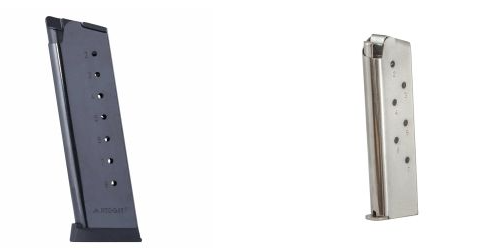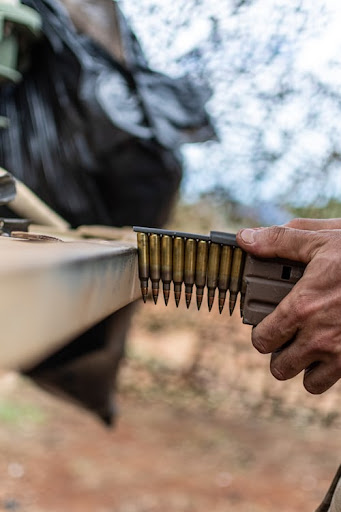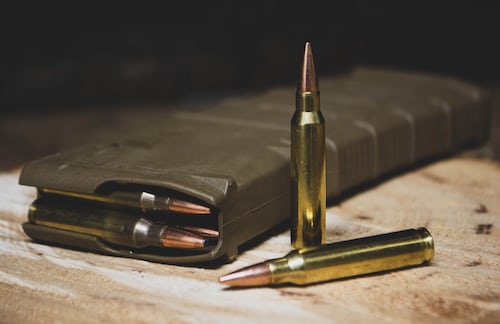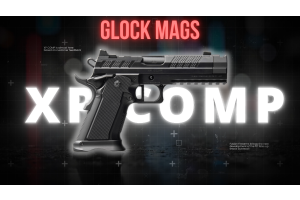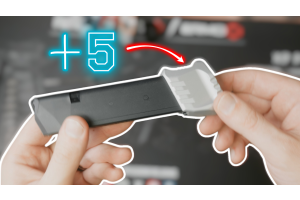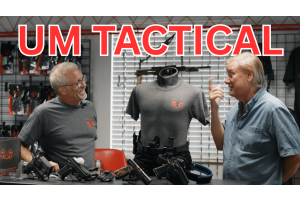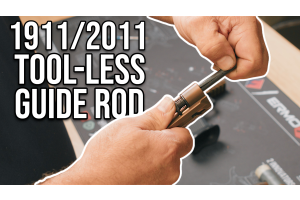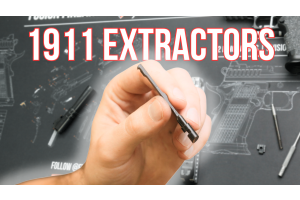What Is a Gun Magazine?
0%
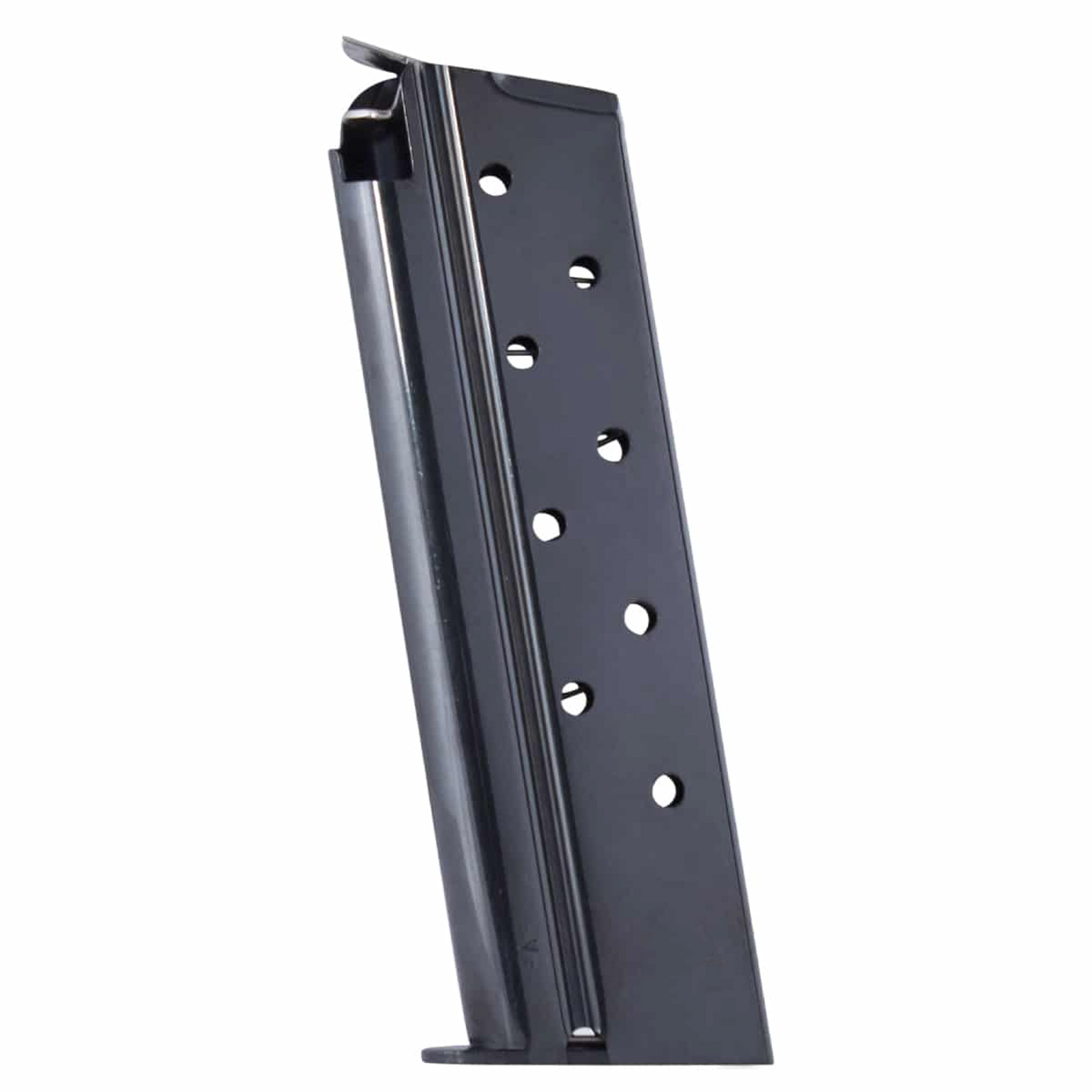
What Is a Gun Magazine?
A gun magazine, also known as a firearm magazine or ammunition clip, is a device used to hold and feed ammunition into a firearm. It typically consists of a metal or plastic casing with a spring and follower mechanism that pushes rounds of ammunition up into the firearm's chamber for firing. Gun magazines come in different shapes, sizes, and capacities and can be detachable or built into the firearm itself. They are an essential component of any firearm and play a crucial role in its functionality and performance.
A magazine design comprises the casino and a spring follower. The spring follower is responsible for pushing against the gun action parts (cartridges), resulting in a shot. Gun magazines should be empty if the firearm is not in use.
To check a firearm magazine, look inside and identify the spring follower. You can also use your hands to feel the follower. If the magazine spring follower is invisible or you cannot touch or feel it, the cartridge within it is stuck. Always check the Magazine to alleviate any jams for efficient gun use.
How To Choose The Right Magazine For Your Firearm?
To pick the right magazine for your firearm, you should consider the following factors:
- Compatibility: The first step is to determine what magazines are compatible with your specific firearm. Different firearms may require different magazines, so it's important to consult the manufacturer's specifications or user manual to identify the appropriate magazine.
- Capacity: Consider the magazine capacity you need. Depending on your intended use, you may need a magazine with a high capacity, or you may prefer a smaller capacity for ease of handling and portability. Be aware of any legal restrictions on magazine capacity in your jurisdiction.
- Quality: Look for a magazine that is made from high-quality materials and is well-constructed. A good magazine should be durable, reliable, and easy to use.
- Price: Consider your budget when selecting a magazine. Magazines can vary in price depending on the manufacturer, capacity, and quality. However, it's important to prioritize quality and reliability over price.
- Purpose: Consider what you'll be using your firearm for. If you're using it for hunting or competition shooting, you may need a magazine that allows for quick and easy reloading. If you're using it for self-defense, you may prefer a magazine with a higher capacity for added firepower.
- Reviews: Read reviews and get feedback from other firearm owners who have used the same magazine for your firearm. This can help you identify any common issues or limitations that you may not have considered.
Overall, it's important to choose a magazine that is compatible with your firearm, meets your needs and budget, and is of high quality and reliability. Always follow the manufacturer's instructions for loading and using your magazine, and practice safe firearms handling techniques.
What is the difference between a single-stack and a double-stack magazine?
Single-stack and double-stack magazines refer to the way the cartridges are stacked within the magazine. A single-stack magazine stacks the cartridges in a single row, while a double-stack magazine stacks the cartridges in two rows. This allows double-stack magazines to hold more rounds than single-stack magazines of the same size, but they may also be wider and less ergonomic.
How do you clean and maintain a gun magazine?
To clean and maintain a gun magazine, disassemble it according to the manufacturer's instructions, removing any dirt, debris, or fouling from the magazine body and follower. Wipe down the magazine with a clean cloth and lubricate any metal-to-metal contact points with a light coat of gun oil. Reassemble the magazine and function check it to ensure it is working properly.
How do you choose the right ammunition for your gun magazine?
When selecting ammunition for your gun magazine, it's important to choose the correct caliber and grain weight that is appropriate for your firearm. Different firearms may have different requirements, so it's important to consult the manufacturer's specifications or user manual. Be aware that some ammunition may be too powerful or too weak for your firearm, which can cause malfunctions or damage.
How can you test the reliability of a gun magazine?
To test the reliability of a gun magazine, load it with the appropriate number of rounds and fire them through the firearm. Look for any malfunctions, such as failure to feed, failure to eject, or other issues. If the magazine consistently causes malfunctions, it may be defective or require cleaning or maintenance. Additionally, you can perform drop tests and endurance tests on the magazine to check its durability and reliability over time.
How do you load a magazine correctly?
To load a magazine correctly, insert the cartridges into the magazine one at a time, pressing down with your thumb or using a loading tool to ensure they are seated properly. Be careful not to overload the magazine beyond its capacity, which can cause malfunctions or damage.
What is the proper way to unload a magazine?
To unload a magazine, first, remove the magazine from the firearm. Then, press the magazine release button or lever to eject any remaining rounds from the magazine. Finally, carefully remove any cartridges from the magazine one at a time.
Can you mix different types of ammunition in the same magazine?
Mixing different types of ammunition in the same magazine can be dangerous and unreliable, and may cause malfunctions or damage to the firearm. It's important to only use the appropriate caliber and grain weight for your firearm and to avoid using ammunition from different manufacturers or with different specifications in the same magazine.
How many rounds should you load into a magazine?
The number of rounds you should load into a magazine will depend on the magazine's capacity and any legal restrictions in your jurisdiction. It's important to follow the manufacturer's instructions for loading the magazine and to be aware of any local laws and regulations regarding magazine capacity.
How can you tell if a magazine is fully loaded?
To tell if a magazine is fully loaded, count the number of rounds you have inserted into the magazine, and compare it to the magazine's capacity. Some magazines may have indicators or witness holes that allow you to visually confirm the number of rounds loaded.
Conclusion
In conclusion, gun magazines play a crucial role in firearms operation, providing a convenient and efficient way to feed ammunition into the firearm. A good magazine should be reliable, durable, compatible with the specific firearm, and easy to use. It's important to choose a magazine that meets your needs, budget, and the intended purpose of your firearm. Additionally, it's important to practice proper firearms safety and handling techniques and to be aware of any local laws and regulations regarding firearms and magazine use. By following these guidelines, you can ensure that you are using your firearms and magazines safely and responsibly.
How To Build Your Own Backstop For Shooting
Materials:
- A large wooden frame or retaining wall
- Heavy-duty plastic sheeting or rubber mulch
- Sand, gravel, or dirt
- Staple gun
- Shovel
Instructions:
- Choose a location for your backstop that is safe and legal for shooting. Ensure that the area is free from people, animals, and objects that may be damaged by stray bullets.
- Build a wooden frame or retaining wall that is at least 6 feet high and wide enough to contain the rounds you plan to shoot. Ensure that the frame is sturdy and well-anchored to the ground.
- Line the inside of the frame with heavy-duty plastic sheeting or rubber mulch. This will help to absorb the impact of the bullets and prevent ricochets.
- Fill the backstop with sand, gravel, rubber pellets, or dirt. You can use a shovel to pack the material tightly into the backstop, ensuring that it is level and uniform.
- Staple the plastic sheeting or rubber mulch to the backstop to hold it in place and prevent it from shifting.
- Test the backstop with a few rounds to ensure that it is functioning properly and able to contain the bullets.
Remember to always follow proper firearms safety protocols, and to only shoot in areas that are designated and safe for shooting. It's also important to be aware of any local laws and regulations regarding shooting and backstop construction.
Conclusion
Fusion Firearms not only offers you the best magazines for your firearms in the US. You can also gain any knowledge regarding guns and their use in fusion firearms. However, with each request, purchase, or inquiry, a customer has to provide an FFL license. Fusion Firearms uses it to validate a customer's identity. Also, the FFL is a legal license to carry a firearm.
FAQs
1. How do you use a gun magazine?
- Ensure the firearm is unloaded and pointed in a safe direction.
- Check the magazine for any visible damage or debris that may interfere with the feeding of ammunition.
- Insert the magazine into the designated magazine well on the firearm. Make sure it clicks securely into place.
- Load the magazine with the correct caliber and number of rounds. Follow the manufacturer's instructions for loading the magazine, which may involve pressing cartridges down into the magazine with your thumb or using a loading tool.
- Release the slide or bolt on the firearm to chamber a round, or engage the bolt catch/release if the firearm is equipped with one.
- Fire the firearm until the magazine is empty.
- Remove the empty magazine by pressing the magazine release button or lever on the firearm, which will release the magazine from the magazine well.
- Insert a new magazine and repeat the process as needed.
It's important to always follow the manufacturer's instructions for loading and using a magazine and to practice safe firearms handling and storage techniques. Always treat firearms as if they are loaded, and never point a firearm at anything you don't intend to shoot.
2. What is the history of gun magazines?
Arthur William Savage was the first to invent and design a magazine in the 16th Century. A single round only a few bullets, and most were inbuilt.
The history of more modern gun magazines dates back to the mid-19th century when firearms began to transition from muzzle-loading to breech-loading designs. This allowed for faster and easier reloading and created a need for detachable magazines to hold and feed cartridges into the firearm.
One of the earliest examples of a detachable magazine was the Mannlicher magazine, invented by Austrian firearms designer Ferdinand Mannlicher in the 1880s. This magazine used a clip to hold cartridges and could be quickly and easily inserted into a firearm.
In the early 20th century, the invention of the box magazine further revolutionized firearms design. The box magazine was a metal box that held cartridges and was inserted into the firearm through the bottom of the receiver. This allowed for larger capacities and more reliable feeding and became a common feature in military and sporting rifles.
During World War II, the development of the assault rifle led to the widespread use of high-capacity magazines. The German Sturmgewehr 44, introduced in 1944, was one of the first firearms to use a detachable magazine with a capacity of 30 rounds. The concept of the assault rifle, with its compact design and high-capacity magazine, has since become a standard for modern military firearms.
In the civilian market, gun magazines have also evolved, with many manufacturers producing magazines with high-capacity and quick-release features for sporting and self-defense purposes.
Overall, the history of gun magazines is closely tied to the evolution of firearms technology and has played a significant role in the development of modern firearms.
3. What makes a good gun magazine?
- Reliable: The magazine should be well-constructed and reliable, feeding rounds into the gun smoothly without causing malfunctions.
- Capacity: The magazine should hold a sufficient number of rounds to meet the user's needs, while still being legal in the user's jurisdiction.
- Durability: The magazine should be made of materials that can withstand repeated use and abuse, such as drops or impacts.
- Compatibility: The magazine should be designed to work with the specific firearm it is intended for, without requiring any modifications or alterations.
- Ergonomics: The magazine should be easy to handle and manipulate, with a design that allows for quick and efficient reloading.
- Price: The magazine should be priced reasonably, allowing users to purchase multiple magazines without breaking the bank.
- Availability: The magazine should be readily available for purchase, either from the manufacturer or through third-party retailers.
Overall, a good gun magazine should be reliable, durable, compatible, and easy to use, while still being priced reasonably and readily available.
4. Are there any regulations for gun magazines?
Yes, some regulations govern different firearms in the United States. The Federal Government and local authorities have different laws. However, both regulatory authorities indicate that a player must have an FFL license to use or purchase any part of a gun, including a gun magazine.
References
Magazines[Podcast] Designing a Firearms Magazine
Building Your Own Backstop


